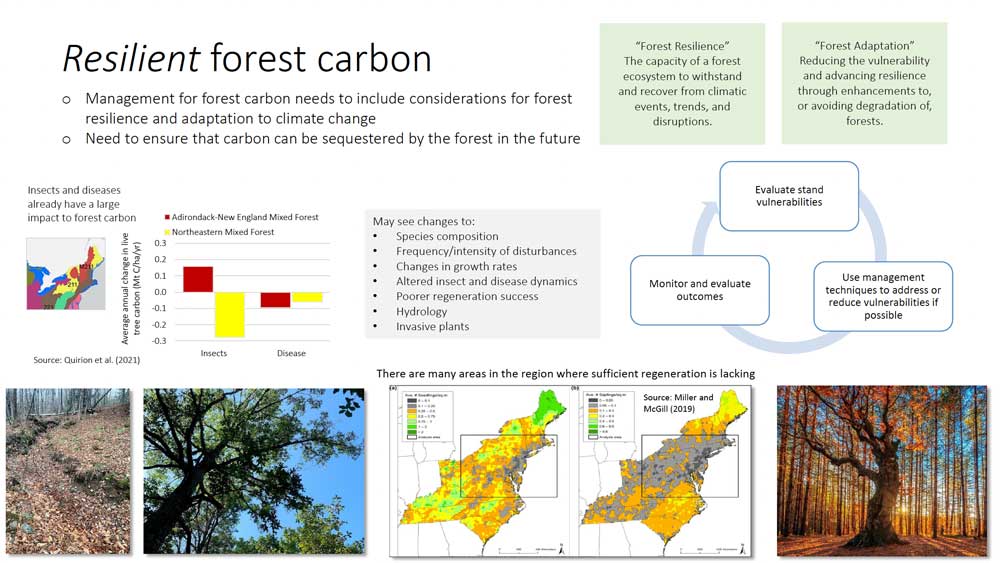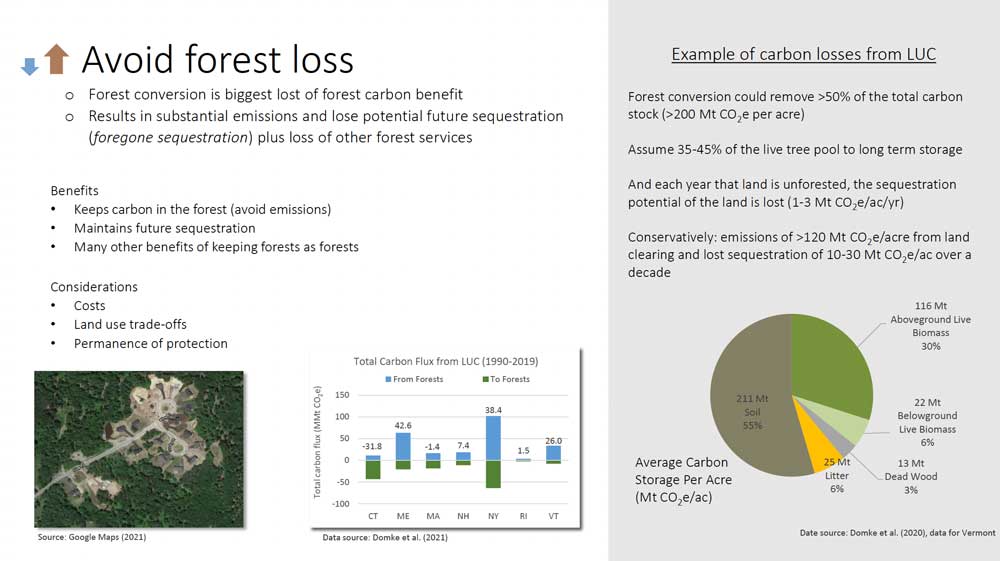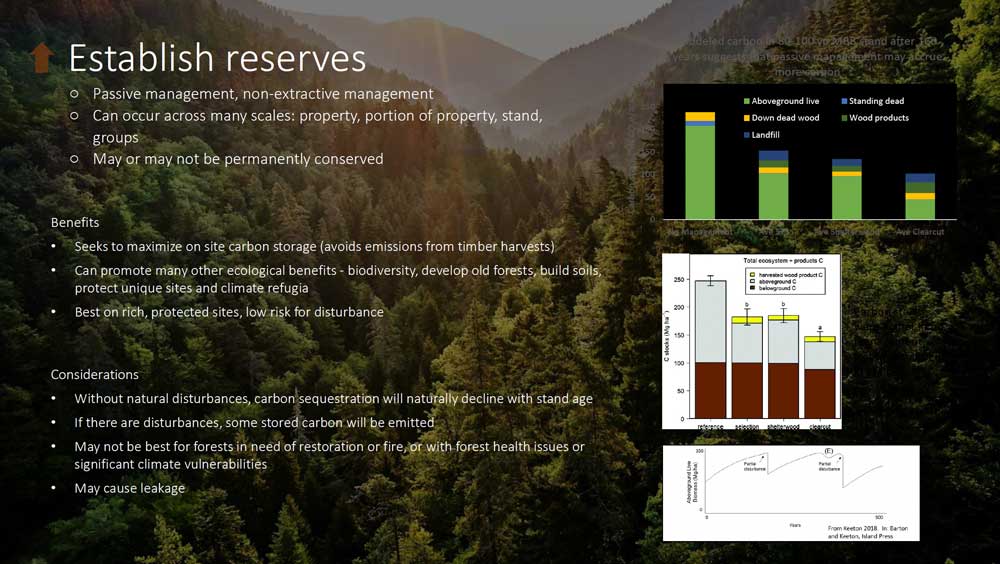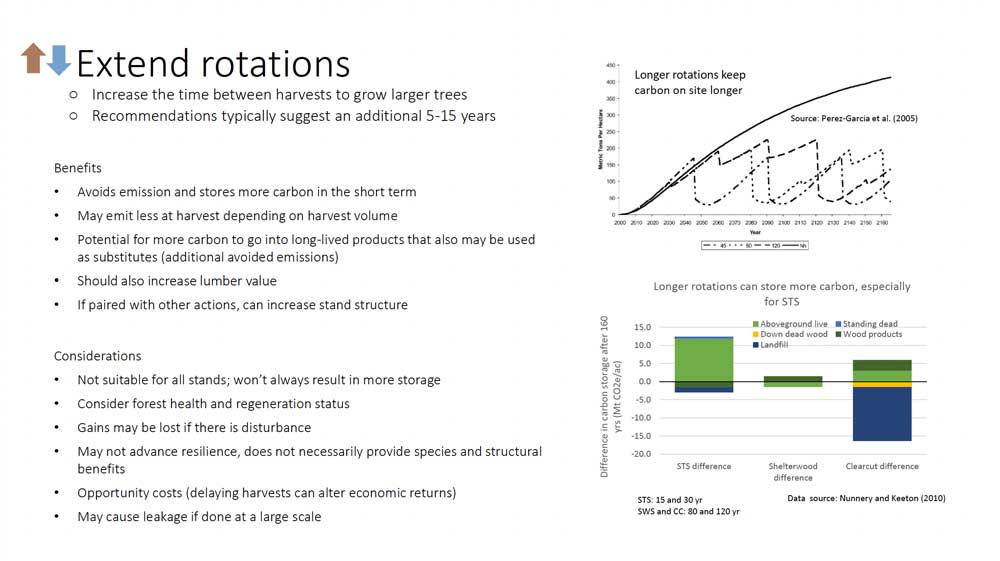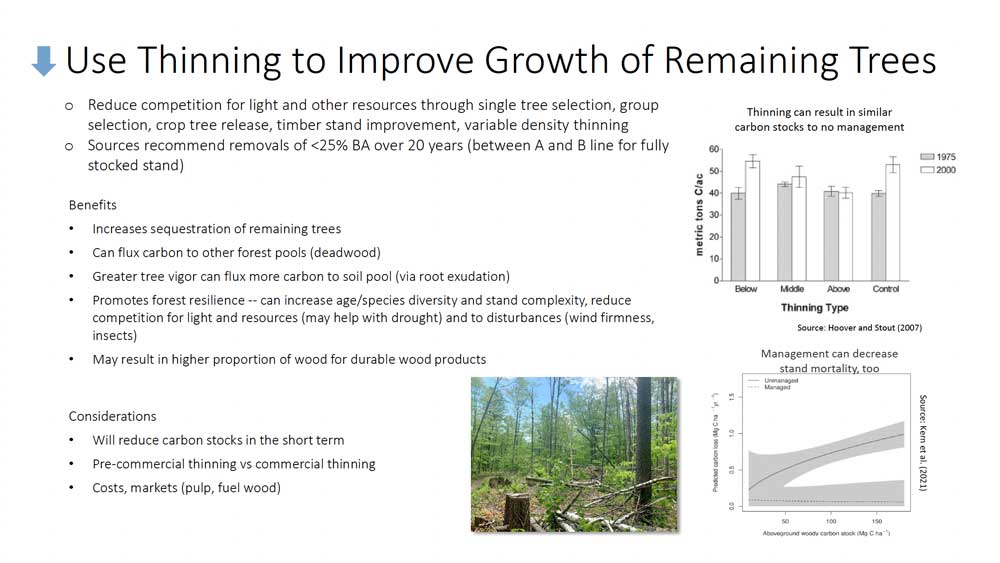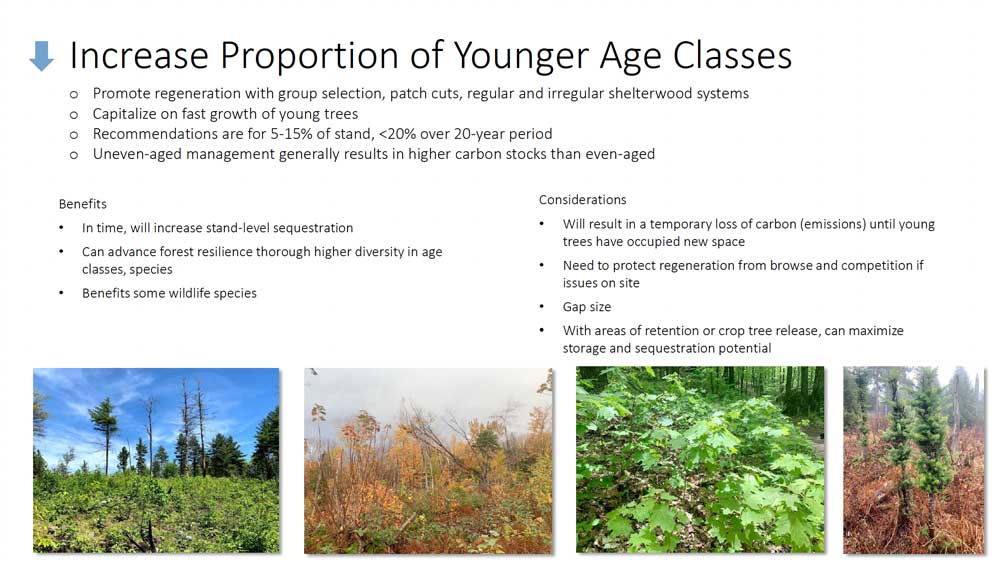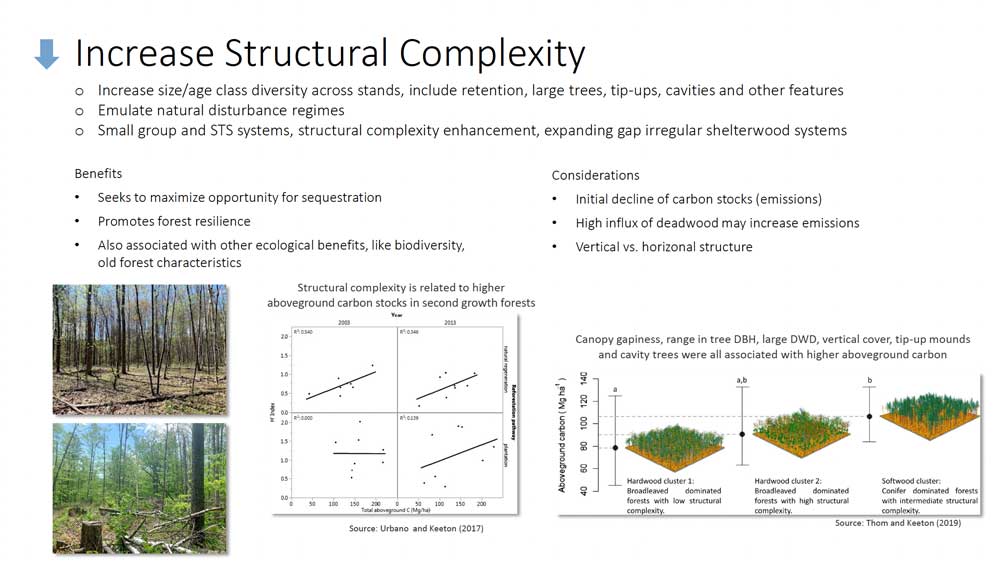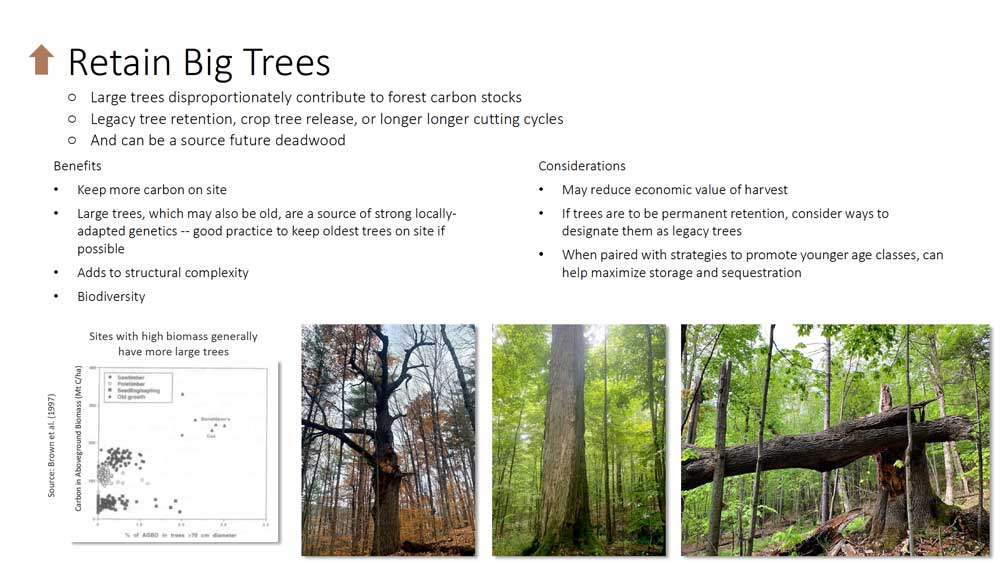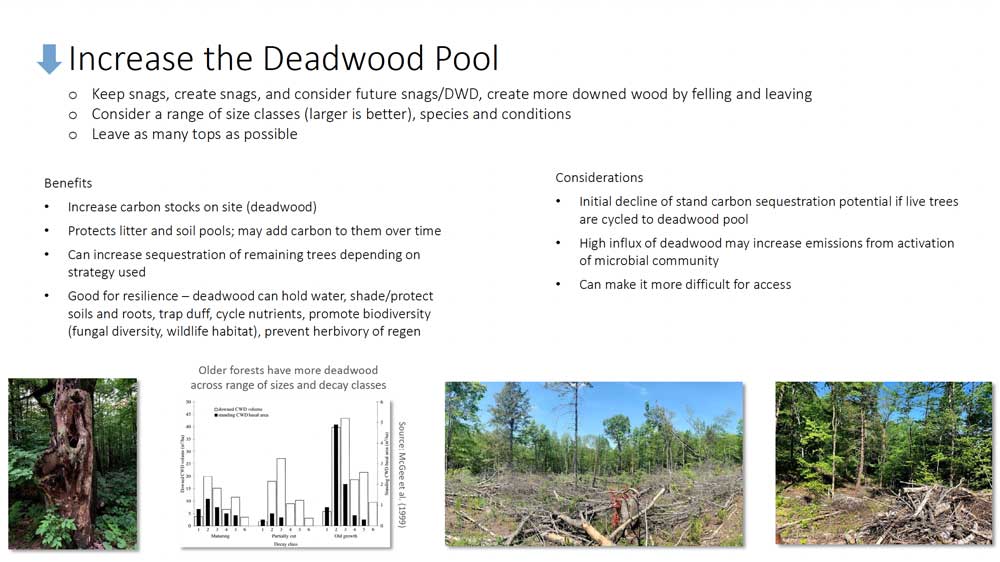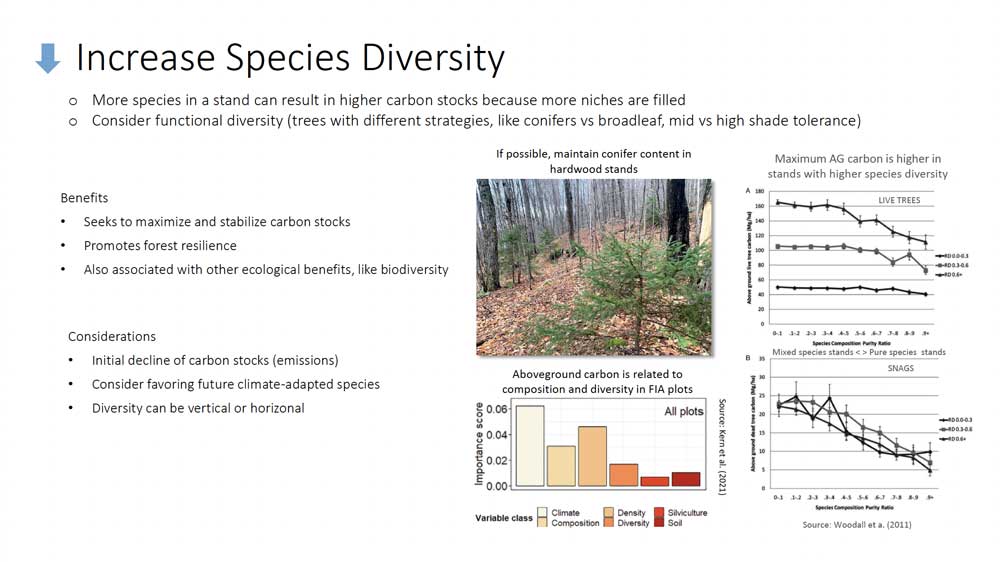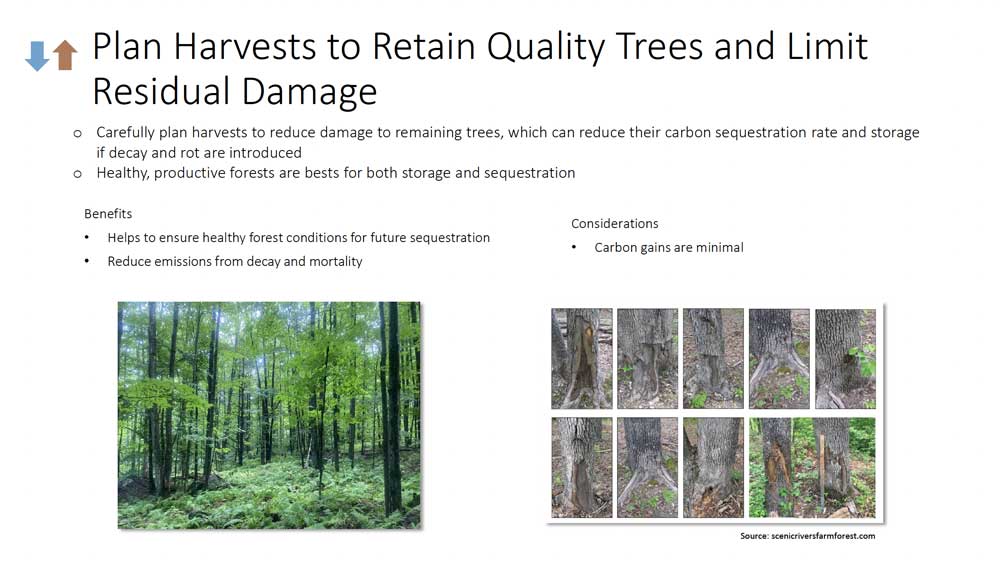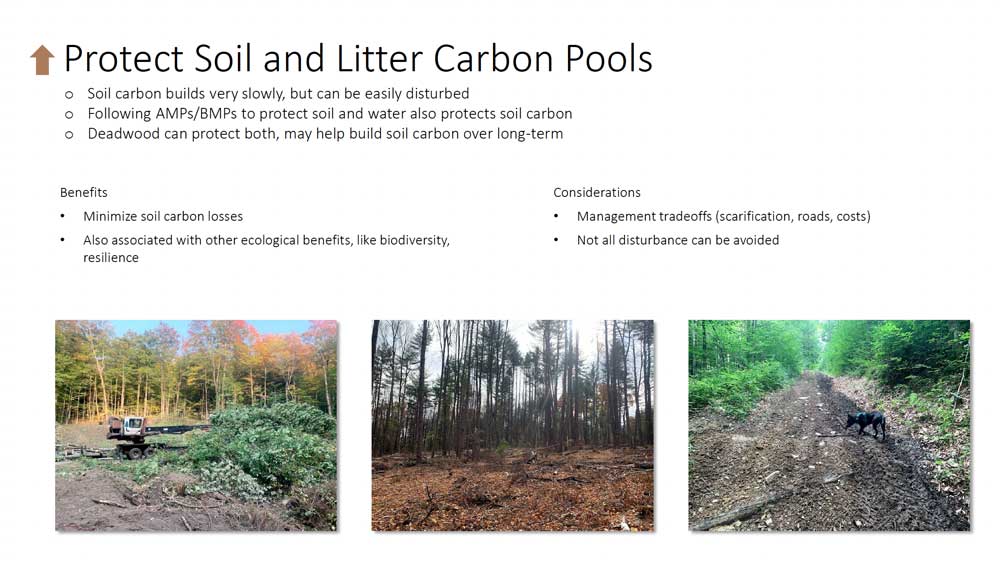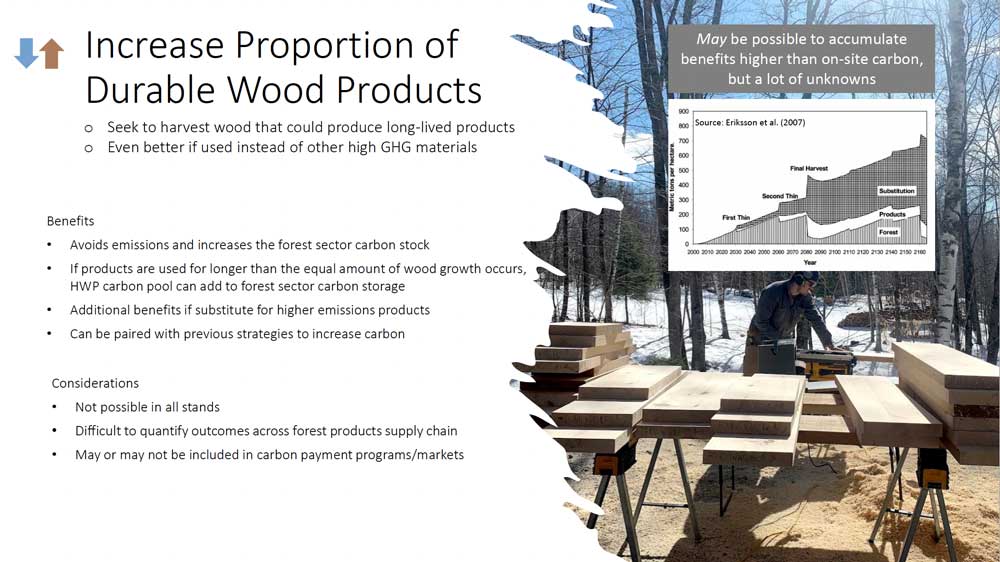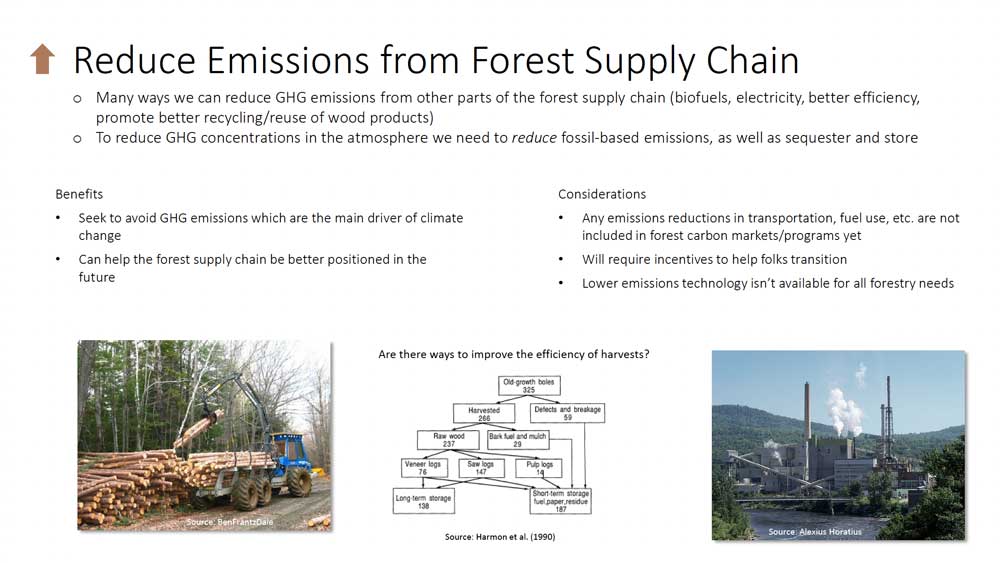Carbon Friendly Forest Management
There are many forest management practices that are carbon-friendly. Here is a good set of practices to consider if you care about forest carbon in your woods.
Northern Institute of Applied Climate Science
The Northern Institute of Applied Climate Science has also developed the following comprehensive menu of options for practicing carbon-friendly forest management:
Strategy 1: Maintain or increase extent of forest ecosystems
Approach 1.1 Avoid forest conversion to non forest land uses
Approach 1.2 Reforest lands that have been deforested and afforest suitable lands
Approach 1.3 Increase the extent of forest cover within urban areas
Approach 1.4 Increase or implement agroforestry practices
Strategy 2: Sustain fundamental ecological functions
Approach 2.1 Reduce impacts on soils and nutrient cycling
Approach 2.2 Maintain or restore hydrology
Approach 2.3 Prevent the introduction and establishment of invasive plant species and remove existing invasives
Approach 2.4 Maintain or improve the ability of forests to resist pests and pathogens
Approach 2.5 Reduce competition for moisture, nutrients, and light.
Strategy 3: Reduce carbon losses from natural disturbance, including wildfire
Approach 3.1 Restore or maintain fire in fire-adapted ecosystems
Approach 3.2 Establish natural or artificial fuel breaks to slow the spread of catastrophic fire
Approach 3.3 Alter forest structure or composition to reduce the risk, severity, or extent of wildfire
Approach 3.4 Reduce the risk of tree mortality from biological or climatic stressors in fire-prone systems
Approach 3.5 Alter forest structure to reduce the risk, severity, or extent of wind and ice damage.
Strategy 4: Enhance forest recovery following disturbance
Approach 4.1 Promptly revegetate sites after disturbance
Approach 4.2 Restore disturbed sites with a diversity of species that are adapted to future conditions
Approach 4.3 Protect future-adapted seedlings and saplings
Approach 4.4 Guide species composition at early stages of development to meet expected future conditions.
Strategy 5: Prioritize management of locations that provide high carbon value across the landscape
Approach 5.1 Prioritize low-vulnerability sites for maintaining or enhancing carbon stocks
Approach 5.2 Establish reserves on sites with high carbon density.
Strategy 6: Maintain or enhance existing carbon stocks while retaining forest character
Approach 6.1 Increase structural complexity through retention of biological legacies in living and dead wood
Approach 6.2 Increase stocking on well-stocked or understocked forest lands
Approach 6.3 Increase harvest frequency or intensity because of greater risk of tree mortality
Approach 6.4 Disfavor species that are distinctly maladapted
Approach 6.5 Manage for existing species and genotypes with wide moisture and temperature tolerances
Approach 6.6 Promote species and structural diversity to enhance carbon capture and storage efficiency
Approach 6.7 Use seeds, germplasm, and other genetic material from across a greater geographic range.
Strategy 7: Enhance or maintain sequestration capacity through significant forest alterations
Approach 7.1 Favor existing species or genotypes that are better adapted to future conditions
Approach 7.2 Alter forest composition or structure to maximize carbon stocks
Approach 7.3 Promote species with enhanced carbon density in woody biomass
Approach 7.4 Introduce species or genotypes that are expected to be adapted to future conditions.
The Maine Forest Carbon Task Force also has a helpful list of carbon friendly forest practices and estimated costs in Appendix A of their recent report.
Subscribe to our newsletter
Info, resources, tools and tips to support forest landowners, foresters, land trusts and others interested in forest carbon.

